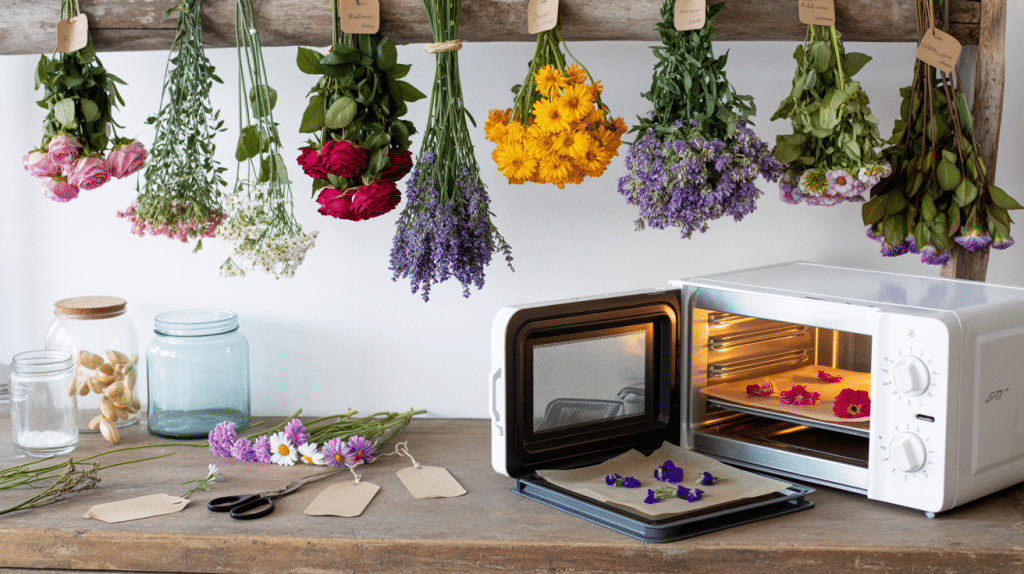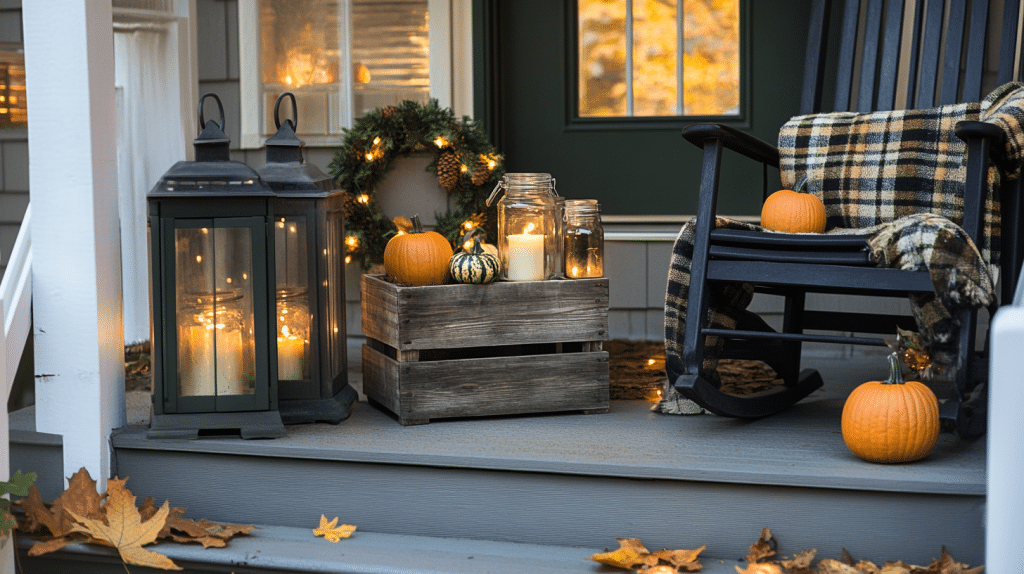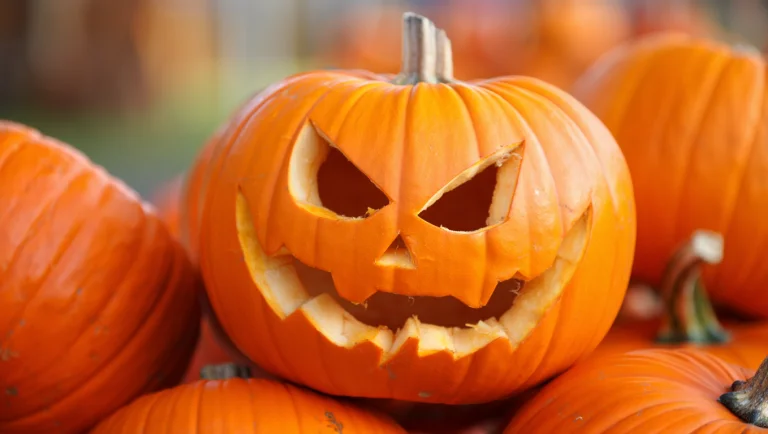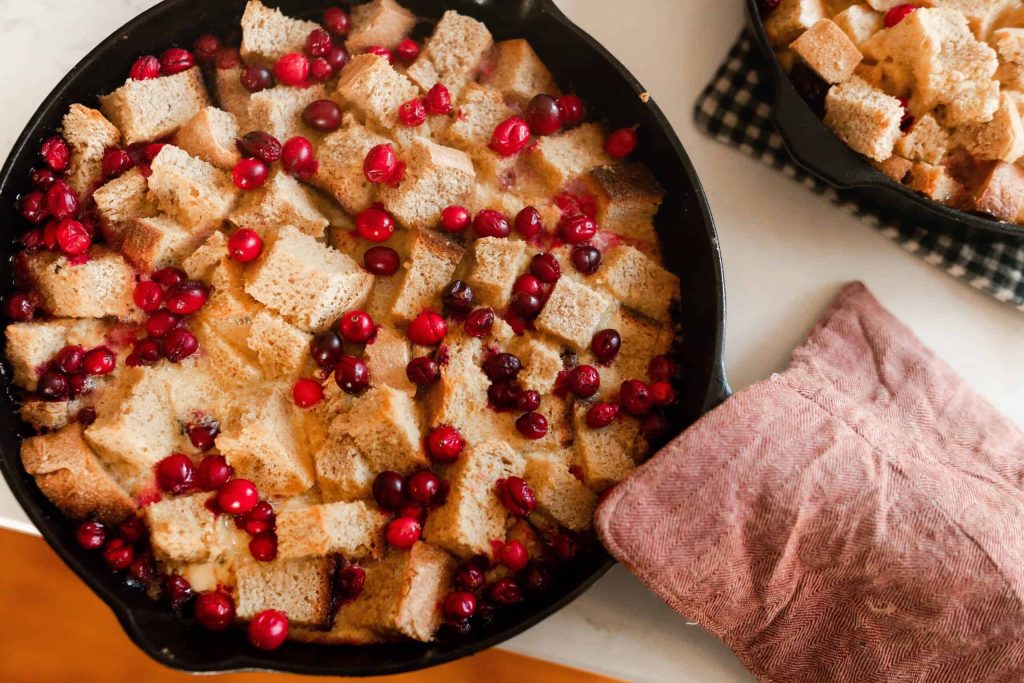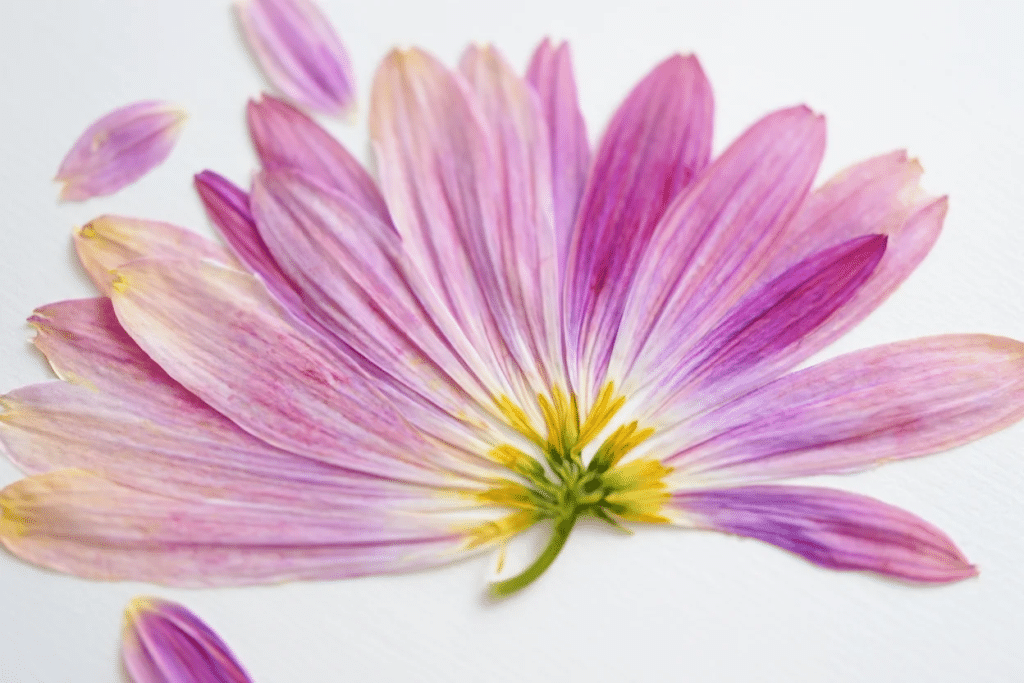Ever watched a beautiful bouquet slowly wilt away and wished you could freeze time? I’ve felt that too and that’s exactly what led me to discover flower dehydration.
It’s a surprisingly simple technique that’s helped me preserve some of my favorite blooms for months, even years.
In this article, I’ll guide you through the process of selecting the right flowers, preparing them correctly, and exploring various drying methods based on the time available and the desired look.
Why Dehydrate Flowers?
Dehydrating flowers is a popular method of preserving their beauty and extending their longevity.
By removing the moisture content, flowers can maintain their vibrant colors, delicate shapes, and intricate details for months or even years. This process offers numerous benefits for flower enthusiasts, crafters, and those who appreciate the timeless charm of nature’s blooms.
Some key advantages of dehydrating flowers include:
- Longevity: Dehydrated flowers can last significantly longer than fresh flowers, allowing you to enjoy their beauty for extended periods without the need for constant replacements.
- Versatility: Preserved flowers can be used in a wide range of applications, from creating stunning floral arrangements and decorations to crafting personalized gifts and keepsakes.
- Low-maintenance: Unlike fresh flowers, dehydrated blooms require minimal upkeep, making them an attractive choice for those who want to incorporate natural elements into their décor.
How to Dehydrate Flowers
Dehydrating flowers is such a beautiful way to preserve memories, celebrate nature, and create lasting pieces of art.
Whether I’m holding on to a special bouquet or getting creative with blooms for crafts, dried flowers bring a timeless charm without the constant upkeep. It’s like capturing nature’s beauty in a way that will stay with me for years to come.

1. Air Drying
This classic method is as simple as it gets, requiring nothing more than string and a dark, dry space. I like to gather 5-8 stems, tie them together, and hang them upside down, letting nature do the rest over the course of 1-3 weeks.
Air drying works wonders for roses, lavender, and other sturdy blooms.
The slow process helps flowers keep their natural shape and stem integrity, making it perfect for creating arrangements or wreaths that still have that organic feel.
2. Silica Gel Drying
If I want to preserve vibrant colors and delicate shapes, silica gel is my go-to. It’s a little pricier than other methods, but it’s so worth it, especially for wedding bouquets, orchids, and flowers with soft petals that don’t air dry well.
Process:- To do it, I bury the flowers completely in silica gel inside an airtight container for about 3-7 days. The result? Beautifully preserved dimensionality and color that stay true to the original bloom.
3. Microwave Pressing
Sometimes, I need results fast, and for that, microwave pressing is a lifesaver. I simply sandwich flowers between coffee filters or parchment paper, press them between microwave-safe plates, and heat them in 30-second bursts.
Duration- Most flowers dry in just a few minutes! It’s great for flat flowers like daisies or pansies, especially if I want to use them in pressed flower art.
However, this method sacrifices the three-dimensional quality of the blooms, so it’s better for those looking for a more two-dimensional result.
Best Blooms for Dehydrating
Not all flowers are created equal when it comes to dehydration. Some preserve their charm beautifully, while others lose their appeal once dried. Here’s a look at the top performers that consistently deliver stunning results.
Roses
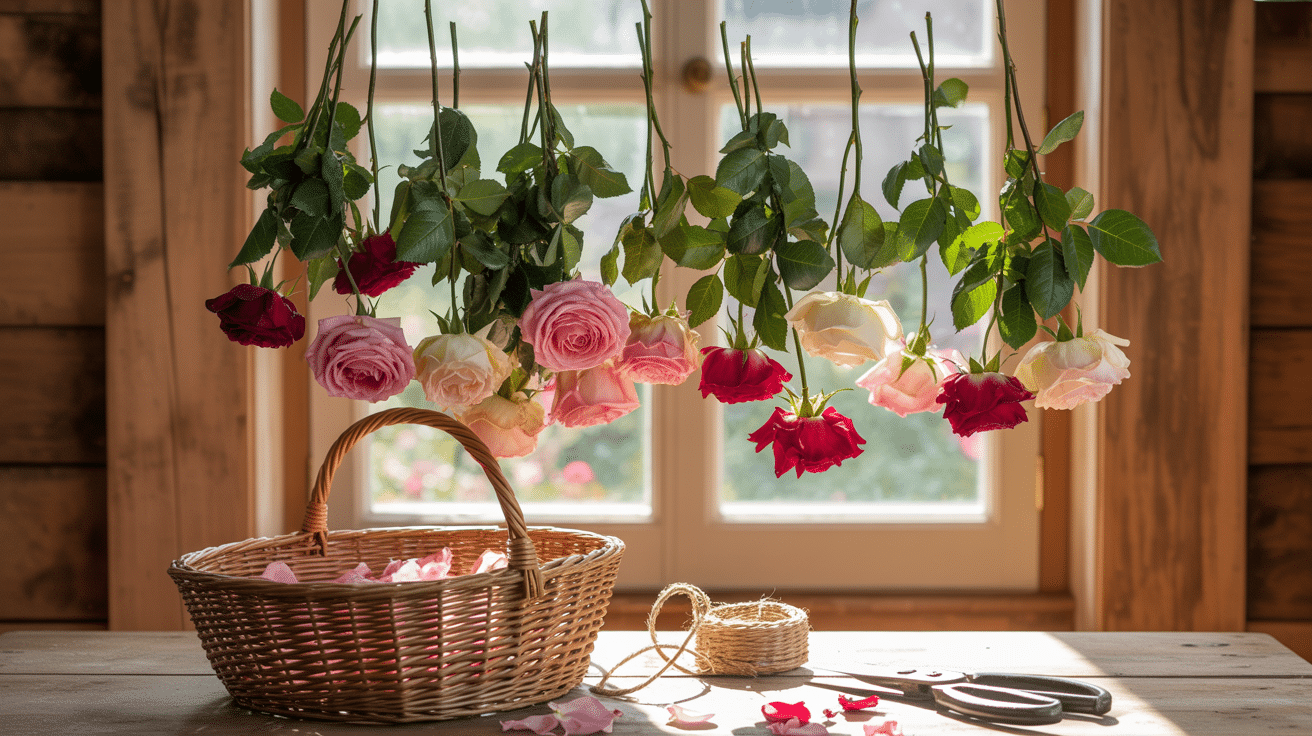
Roses truly stand as champions in the world of flower drying, and it’s easy to see why.
Their densely packed petals hold their shape incredibly well, especially when dried at just the right stage fully open but not overblown. The key is catching them before they start to wilt, so they retain that perfect, natural look.
Miniature and spray roses, in particular, often outperform the larger varieties. They tend to hold onto their dimensional quality better, keeping their fullness and charm after drying.
These roses look absolutely stunning when dried using silica gel, which helps preserve their rich, vibrant colors from deep reds to soft, delicate pinks. If you want to keep roses looking as beautiful as the day you received them, silica gel is a game-changer.
Lavender
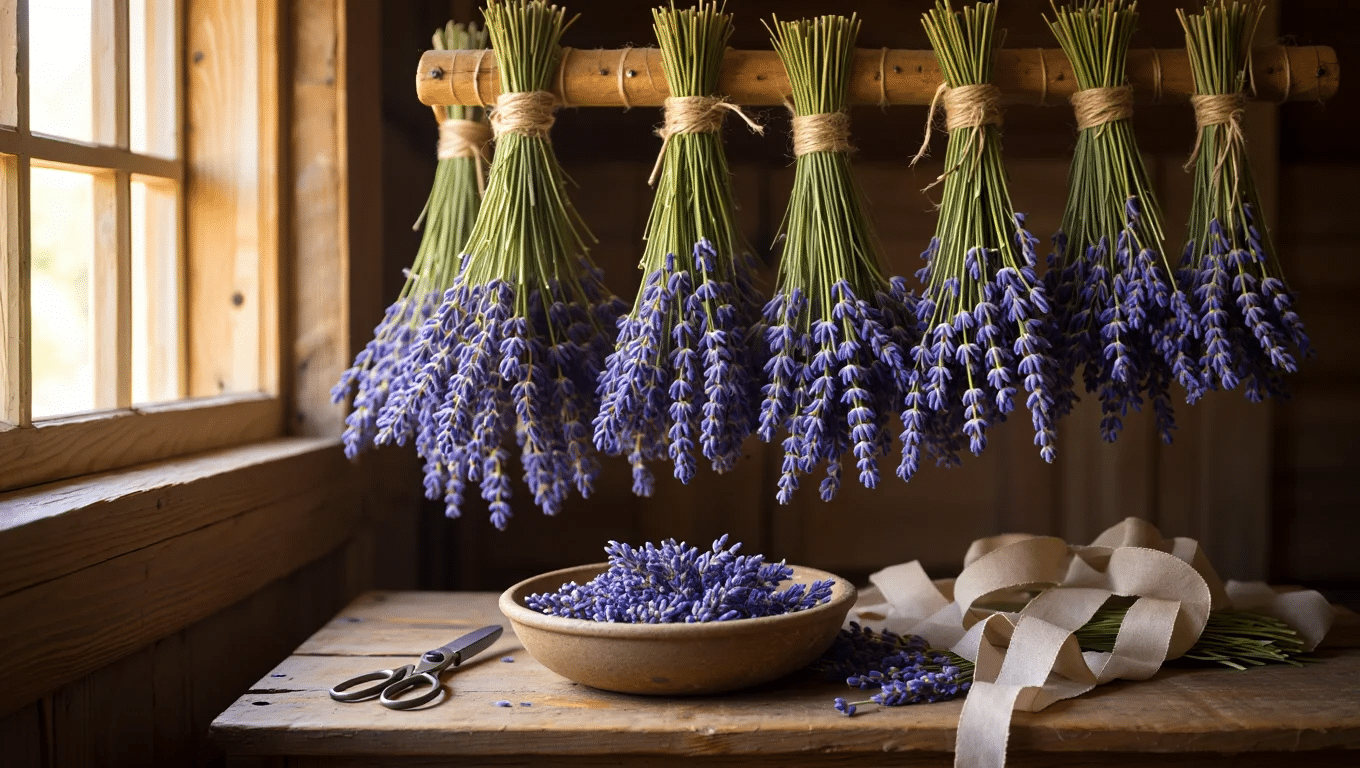
Lavender is practically tailor-made for drying with its naturally low moisture content and sturdy stems.
It’s no wonder it’s such a favorite for preserving! The small flowers hold on to their distinctive purple-blue hue, and what’s even more amazing is that they keep their signature calming fragrance long after they’ve been dehydrated.
For the best results, I harvest lavender when about half the buds on each stem have opened. This ensures the flowers are at their peak, striking the perfect balance between color and fragrance.
Baby’s Breath
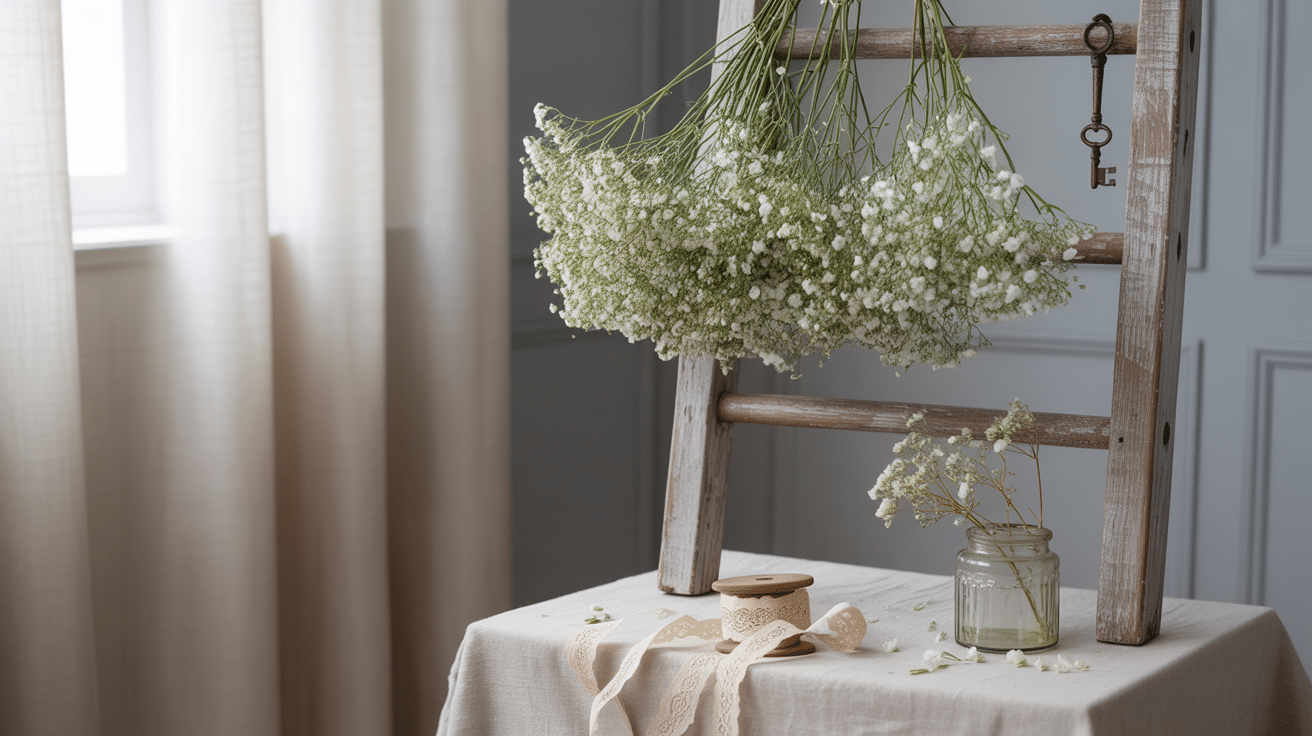
Baby’s breath is a wedding favorite that transitions beautifully from fresh to dried, maintaining its delicate, cloud-like appearance. The tiny white flowers keep their airy, ethereal quality even after dehydration, which makes them perfect fillers for dried arrangements.
What I love about baby’s breath is how quickly it dries. Thanks to its naturally small blooms and thin stems, it’s often ready in just one week with simple air drying.
Statice
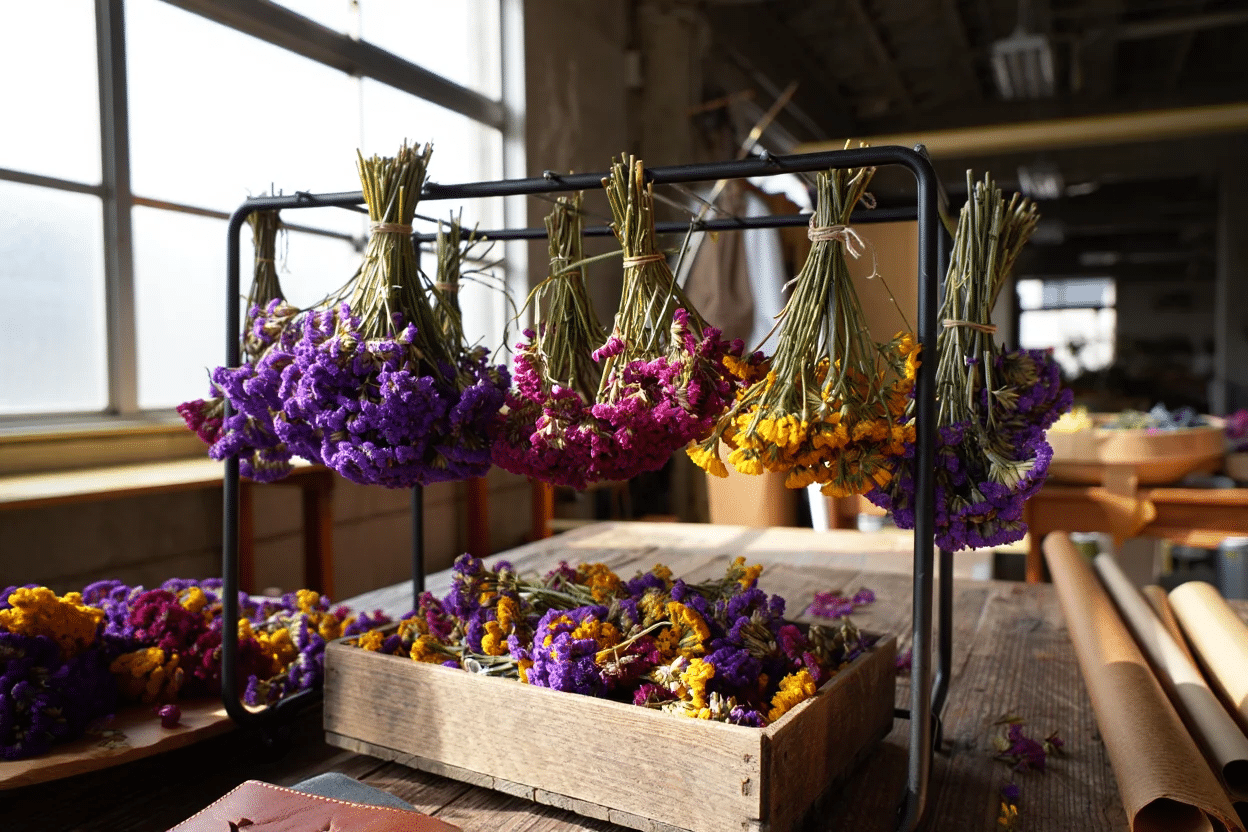
Statice is one of those flowers that seems to defy the usual rules of flower preservation sometimes, it even looks better dried than it does fresh!
What makes statice stand out is its stiff stems, which make it especially easy to work with in crafts and arrangements.
Many florists consider statice the most reliable dried flower for maintaining color vibrancy, making it a top choice for long-lasting, eye-catching arrangements.
Eucalyptus
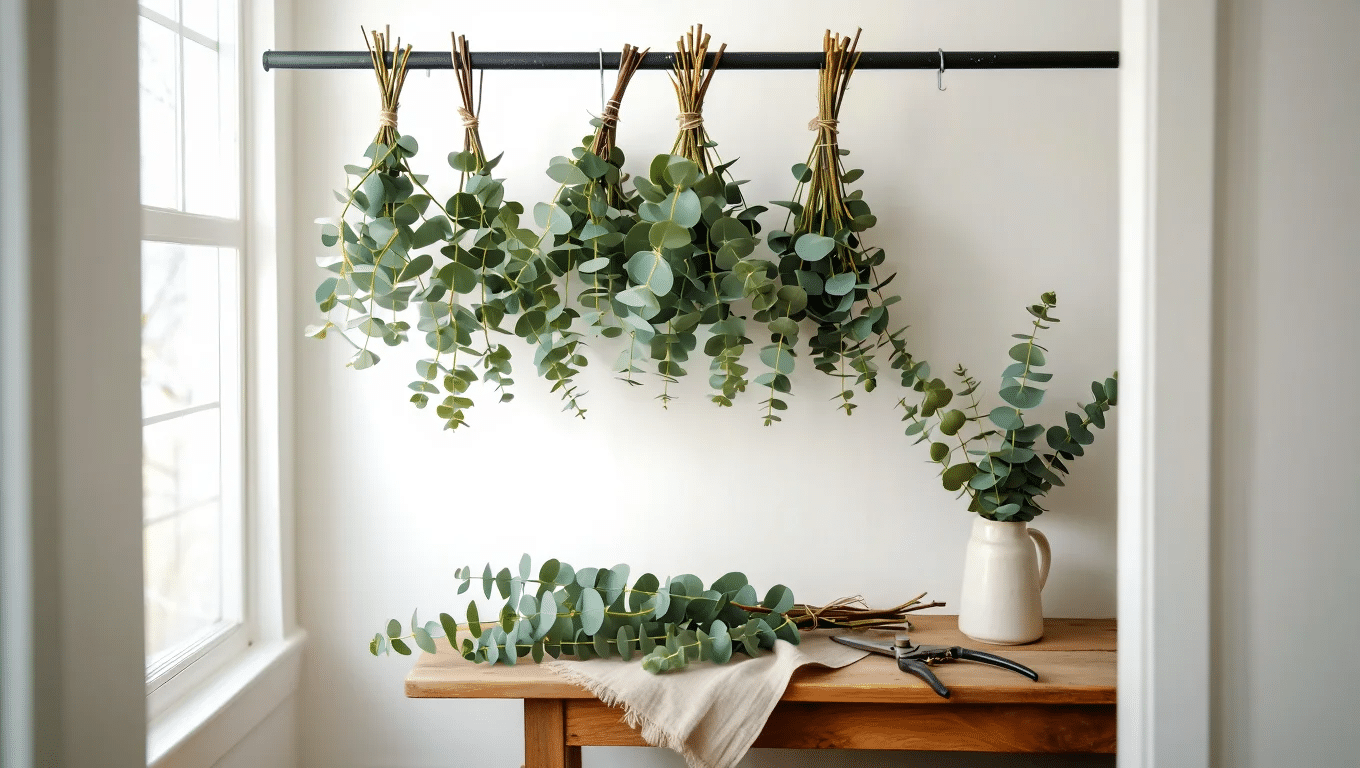
Though technically foliage rather than flowers, I think eucalyptus definitely deserves a spot on my list for its excellent drying properties. The silvery-green leaves keep both their color and distinctive aroma when dried properly.
I love using glycerin preservation soaking the stems in a glycerin-water solution. It makes the eucalyptus especially supple and touchable, staying flexible for years.
Flowers to Avoid Dehydrating
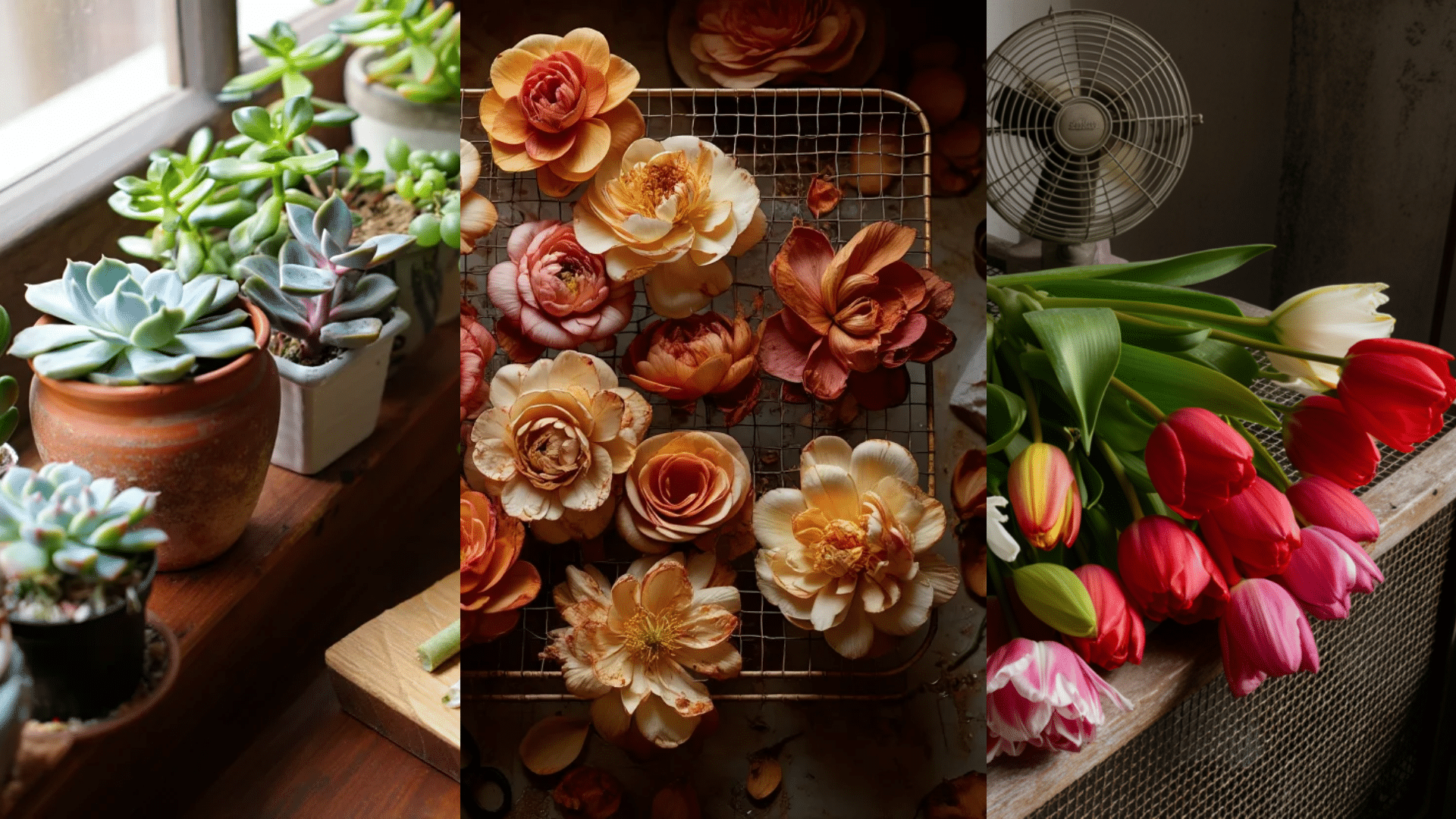
While some flowers transform beautifully into everlasting keepsakes, I’ve found that others simply aren’t made for the drying process. Thick petals, high moisture content, and delicate structures can all make it harder for them to preserve well.
Succulents
Despite their trendy appeal, I’ve found that succulents make poor candidates for traditional dehydration. Their thick, water-storing leaves trap moisture internally, often leading to mold or rot during the drying process.
When they do dry successfully, they tend to shrivel dramatically, losing their distinctive plump appearance that makes them so attractive.
Fleshy Petals
Flowers with thick, fleshy petals like camellias, gardenias, and magnolias present a significant challenge.
Their dense tissue retains moisture unevenly, which can cause the petals to brown or develop mold spots before they dry completely. These blooms also tend to shrink substantially, often curling or twisting in unpredictable ways.
Overly Moist Blooms
Extremely moisture-rich flowers like orchids, lilies, and most spring bulbs require special handling or should be avoided altogether.
Tulips, daffodils, and hyacinths tend to droop dramatically when dried, rarely keeping their characteristic shapes.
If I’m set on preserving these flowers, silica gel might offer the best chance of success, though the results can still be unpredictable.
Unique Uses for Dehydrated Flowers
| Category | Uses |
|---|---|
| Home Decor |
|
| Crafting |
|
| Gifting |
|
| Skincare & Wellness |
|
Closing Thoughts
Dehydrating flowers isn’t just about preventing them from dying it’s about giving them a second life.
The dried rose on my bookshelf, the pressed daisy in my journal, the lavender sachet in my drawer all of these preserve moments that would otherwise fade away.
I started simple with air drying, and as my confidence grew, I experimented with silica gel and microwave methods. The key is patience it always yields the best results, whether I’m preserving a wedding bouquet or the blooms from my garden.
Each dried flower I keep carries memories, meaning, and a touch of nature’s perfect design, now frozen in time for me to enjoy whenever I wish.


